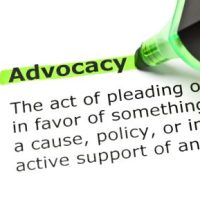In Praise of Non-Human Witnesses

These days, machines seize every opportunity to speak on behalf of humans and make decisions on our behalf, and often we simply resign ourselves to it. Google auto completes our search queries, showing us what it wants us to see before we have even completed our thought about what we want to look for. Navigation apps choose the fastest route for us and sometimes don’t even let us adjust the route so that we can avoid our least favorite intersection. Bots even write scientific research articles that pass peer review, presumably by human peer reviewers. In-person storytelling is becoming a lost art. One place it survives, however, is in the courtroom, where it can do as much harm as good. The world would be a better place if we didn’t always wait for the next lightning strike-induced power outage before setting aside our devices and sitting around telling stories in the most memorable and affecting way possible. In the courtroom, though, devices can tell your story as well as humans can, without falling victim to the human weaknesses that can jeopardize your case. Here, our Miami criminal defense lawyer explains how you can present a strong case by making documents and forensic evidence, rather than witness testimony, the cornerstone of your defense.
Human Witnesses and Human Biases Are Inseparable
The system of criminal trials predates the founding of the United States by centuries, perhaps by millennia. In the old days, oral testimony accounted for the vast majority of evidence presented at trial. Jurors based their decisions on their subjective opinions of the credibility of witnesses, as well as on the content of the testimony. Now, as then, a witness who looks and sounds believable counts for as much as a witness who says something that makes sense, although ideally, witnesses do both. Despite the rigorous jury selection process and the pretrial phase where the prosecution and defense have the right to exclude pieces of evidence, and even to modify the jury instructions, so as to avoid prejudicing the jury, criminal trials are for humans by humans.
When eyewitnesses to an alleged crime testify, their humanity is your Achilles heel. Do they remember the details clearly enough to persuade the jury of your position? Will they be so nervous on the witness stand that they will accidentally contradict themselves during cross examination? Will they remind a juror of the juror’s ex-spouse, horrible boss, or domineering mother-in-law, causing the juror to have a negative opinion of them, even if everything the witness says is true and accurate?
Photographs Are More Than Just Illustrations for Narrative Witness Testimony
Criminal trials rely on narrative testimony not only by eyewitnesses but also by expert witnesses. Most of the time, criminal defense lawyers depend on expert witnesses simply to make an impression on jurors on a human level. The expert witnesses are believable because of their credentials and their facility with terminology related to medicine, forensics, or whichever professional field you have summoned them to testify about. The true role of an expert witness should be something else, however; their role should be to interpret documents and other forensic evidence.
Too often, an expert witness tells a story on the witness stand, often in a question-and-answer format with the lawyer who summoned the witness, and the photographs only serve as illustrations for the story. Expert witness testimony is not Goodnight Moon, though. The photographs or other pieces of forensic evidence should tell the story, and the statements by the expert witness should simply provide context for them. Think of expert witness testimony as the captions on photographs in a book or magazine.
Photographs do not know how people will react to them; neither do screenshots and surveillance camera footage. Therefore, they are not showing what they show simply to get a specific reaction out of the jury. Instead, they are showing what they show because it exists. The jury might not understand the significance of what the images show, so this is where witness testimony comes in. If your non-human evidence is sufficiently well chosen, then not even the most unlikeable witnesses can stop it from making its point. If location data on your phone shows that you were somewhere else at the time of the crime, don’t depend on narrative testimony alone to prove that to the jury.
Contact Our Criminal Defense Attorneys
A South Florida criminal defense lawyer can help you present a compelling defense, using images and digital evidence where applicable. Contact Ratzan & Faccidomo in Miami, Florida for a confidential consultation about your case.
Source:
nobaproject.com/modules/eyewitness-testimony-and-memory-biases


